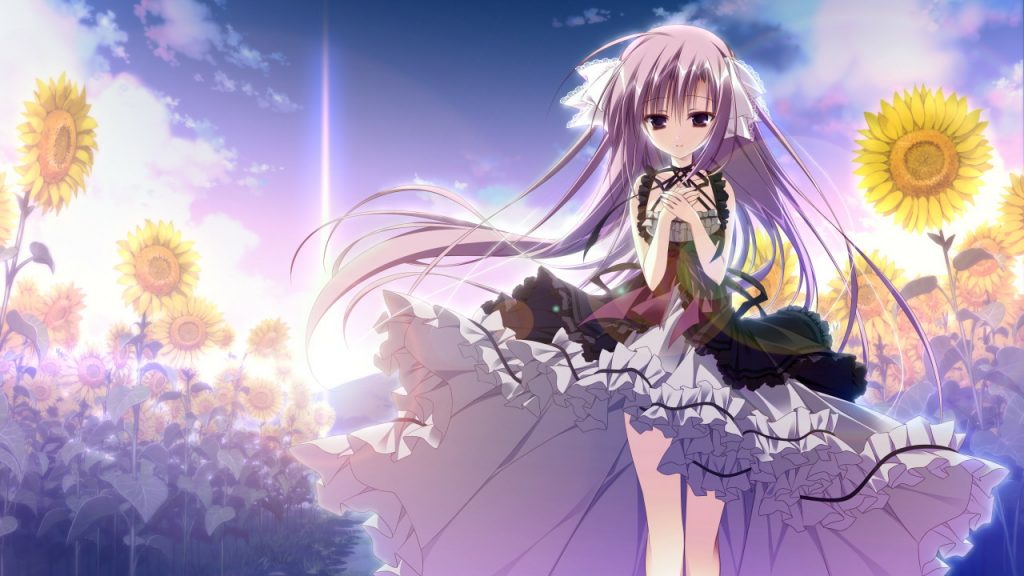
HimaNatsu has a particular, ineffable beauty to its aesthetics and mood.
I wrote this review initially in 2014 — actually exactly 6 years ago from this posting (wild, I know). I’ve decided to repost this review with some major revisions because I believe that the work deserves more exposure. Mild structural and thematic spoilers inbound.
HimaNatsu is best described as a tale of time — with time, pain ceases, and happiness, finds the opportunity to take the position of a regrettably familiar emptiness. With time, just as happiness has the potential to form — sorrow and regret subsequently have time to fester, snowball, and to ultimately corrupt. HimaNatsu attempts to delineate the notion of family, and its associated sentiments; then, it tries to amplify that through each and every route. HimaNatsu, despite its ‘magical’ undertones, does a fantastic job in keeping it grounded to human nature. You won’t find much malice in this series. But you won’t find a lack of serious conflict either.HimaNatsu is broken up into four discrete routes, with the third, leading to the ‘true’ route. The routes are dynamic, and often differ in nature from the other (perhaps a result of the work having so many different authors). All of the routes are meaningful, as they either directly or indirectly go on to develop the mood or themes of HimaNatsu; a few of the routes suffer from lackluster writing, making them feel individually inconsequential (i.e. only as devices to advance the works’ themes + mood). The stand-out routes are predictably Yomi’s route, written by SCA-JI, and Hina’s route, written by Konno Asta. Yomi’s route isn’t the true route, but arguably, the most important route in the game (as her character serves as the linchpin holding the events of the work together – her route is both thematically and emotionally satisfying); Hina’s route, being the true route, is a culmination of the work’s themes – it by far feels the most “complete.” The other routes, Ruca’s and Daiya’s, were both meaningful in relation to the work as a whole; individually, Ruca’s was solid, whereas Daiya’s was a bit of a meme.
One of the major flaws of HimaNatsu is its inability to develop a fleshed-out, meaningful group dynamic by directly developing it through group interactions (that warm, authentic feeling that you’d get from people of close propinquity). Ordinarily, an author would develop this through the common route or through varied slice-of-life scenes. The common route felt “lacking” in this regard – which is a shame, since the premise is that the protagonist and the heroines, who were childhood friends, seek to revitalize their secret base (a cliche — but really, who actually dislikes this cliche). Where the common route could have capitalized on the group dynamics, it was laden with inconsequential, comedic slice of life that didn’t have much meaning. Nonetheless, this flaw didn’t prove fatal to the work, as by the end of the work, it does develop a convincing, close-knit group dynamic. It does this by: 1) providing monologue/commentary on how much the characters care for each other within the routes; 2) developing the individual heroines primarily within their routes (and not outside of them); and 3) utilizing the passage of time element to making it feel more convincing. On this note, the group dynamic felt more reasoned or learned than felt; nonetheless by the end of the work, the characters genuinely felt like an extended family to one another.
If the plot to HimaNatsu doesn’t appeal to the reader, then I can’t imagine that the aesthetics of the work won’t. The art style, as shown, is in typical Makura fashion — e.g. SubaHibi/SakuUta. The CGs within the work span the spectrum from being amazing to not so great. Goes without saying that the soundtrack to HimaNatsu is godly – it wouldn’t be controversial to say that it’s Matsumoto Fuminori’s best work (composer for SubaHibi/SakuUta). Listening to the soundtrack from first track to last tells a story of its own, and is probably the only exposure that a good chunk of people have.
When it comes down to it, HimaNatsu is a storyline based novel centered on drama and maturity. Contrary to most plot-based drama, you won’t have a grand, epic stage. It’s simply a satisfying, extremely consistent, and solid tale centered in the countryside. The novel never really has a point of taking off. It’s very consistent, you begin to like the work more and more, not as a result of some big event, but because you reach the point of ‘feeling’ like you understand the characters, of being a member of the town alongside them. At the end of the novel, you get a warm feeling — of course, while it may not be the hottest feeling, it’s warm, and warmness, in itself, is admirable. I don’t quite recall the last time that I finished a series with a massive smile on my face. A smile not as a result of humor, but perhaps, of joy, and heartfelt content.
Six years after reading HimaNatsu, I look back on it pretty fondly. I remember vividly that when I read it, it felt like a drag at times; the slice of life seemed oppressive, and the length, daunting & grating. But, if I were to reflect on the past now, I can’t say that I really remember the “bad” anymore. Almost as if aligned with the themes of the work itself, the “bad” has lost its way to time, and I’ve only retained the positive, bright memories of the work. As if HimaNatsu were a flawed gem, time has perfected it in a way.